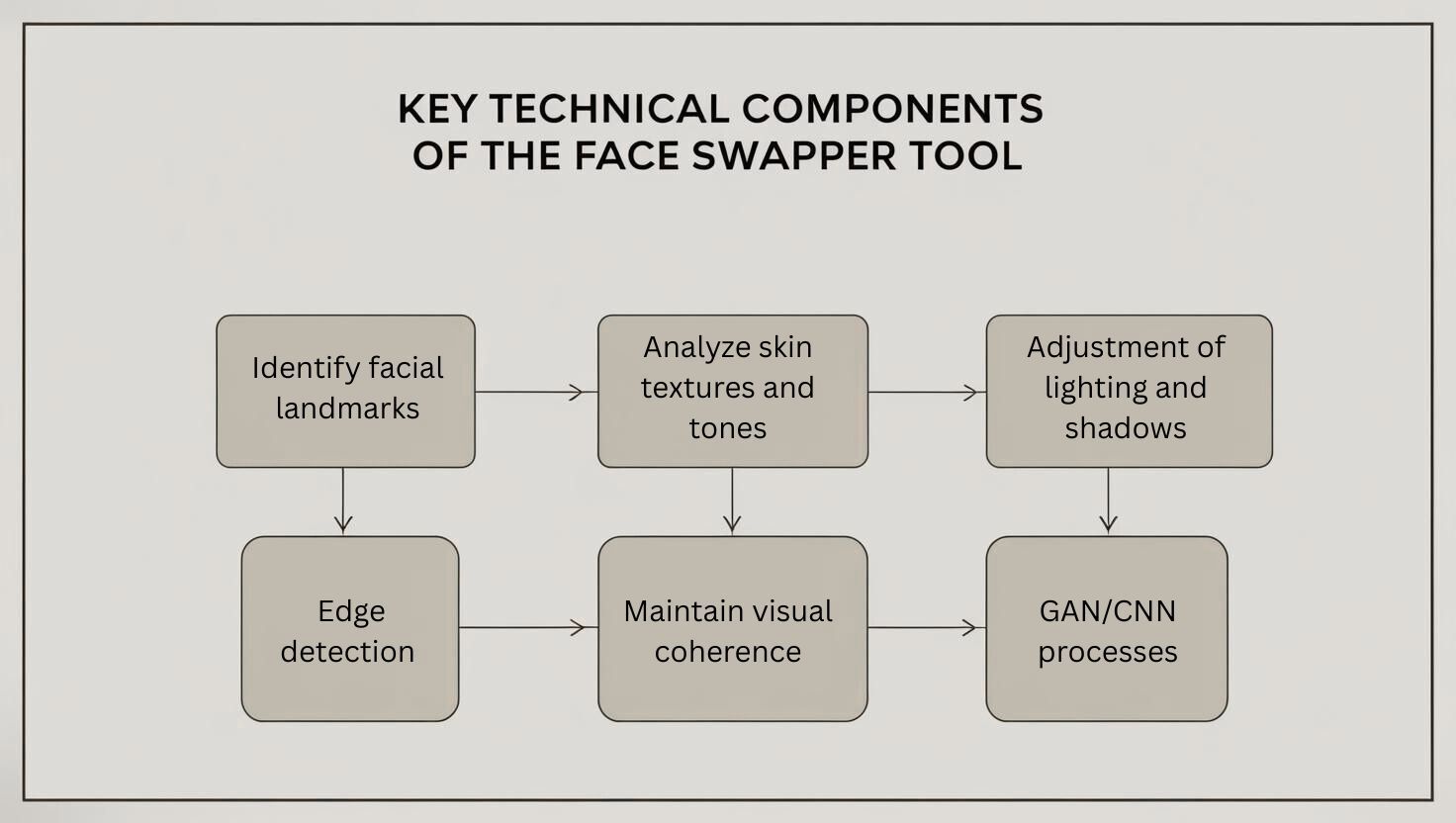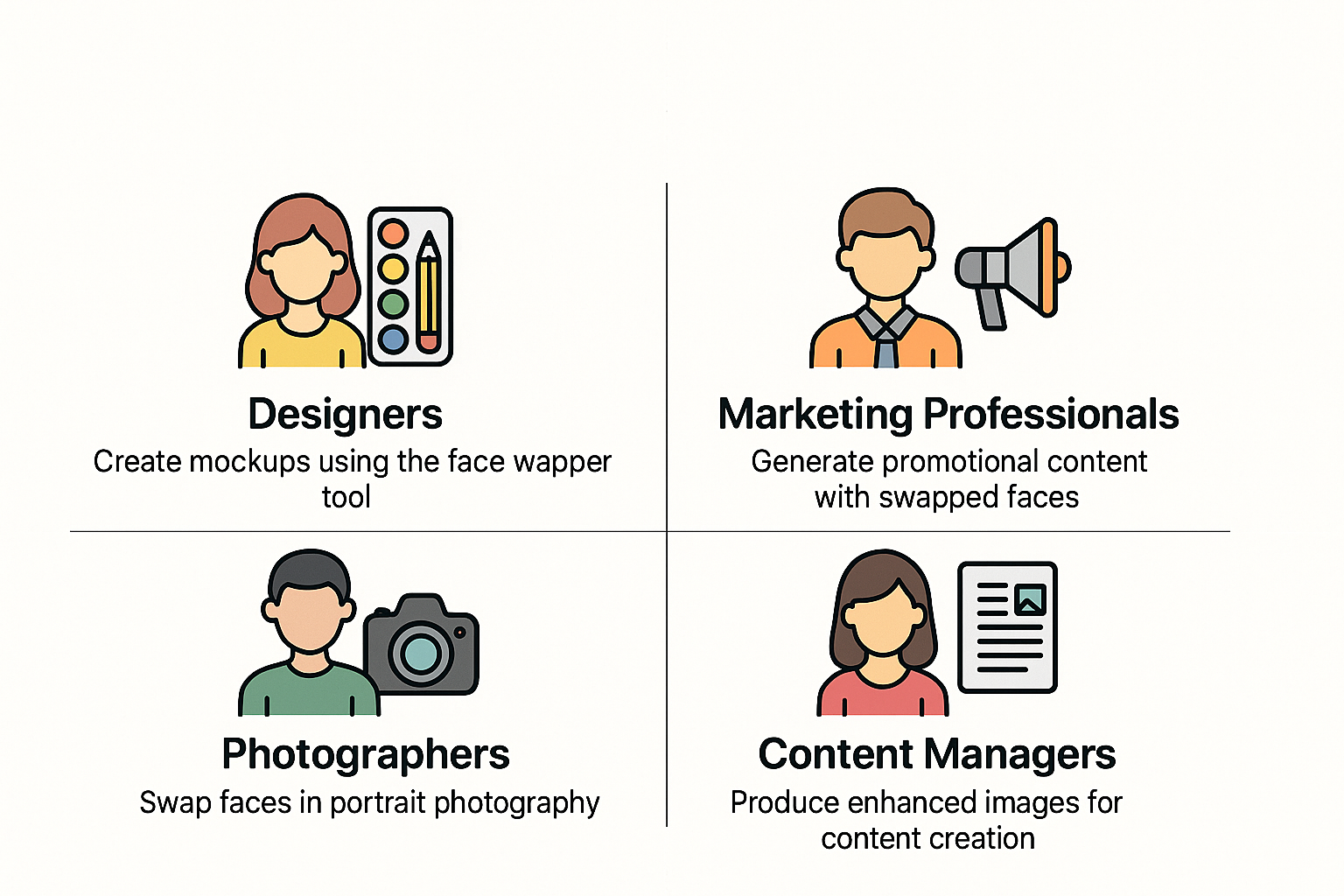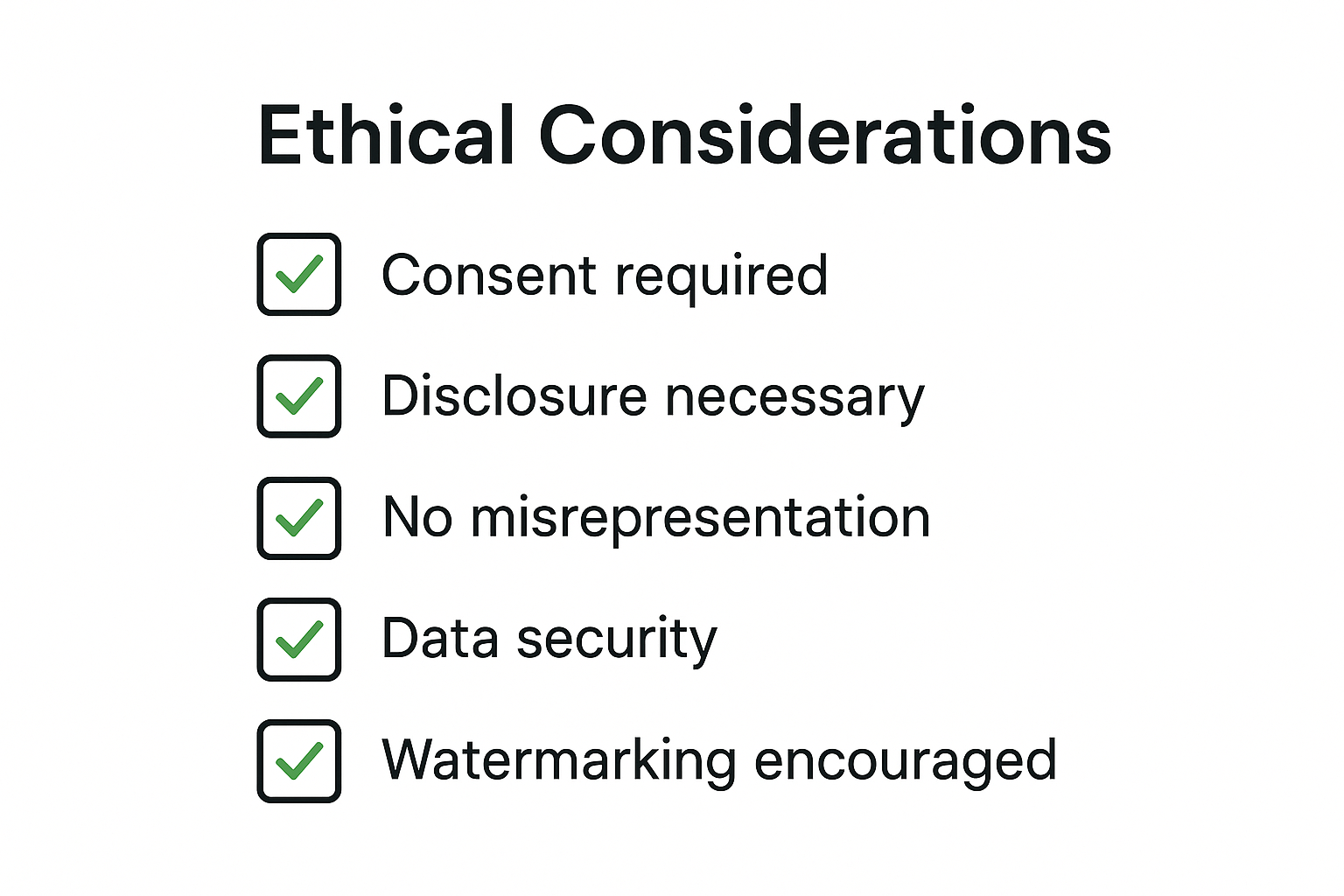Face Swapper Analysis: Professional Applications & Technical Assessment
Face Swapper technology represents a significant advancement in image manipulation capabilities, with Icons8's implementation offering particular utility across multiple professional domains. This analysis examines the technical foundations, practical applications, and ethical considerations surrounding this tool, providing a comprehensive assessment for various professional users.Technical Foundations
The Face Swapper tool utilizes deep learning algorithms to identify facial features within images and seamlessly transpose them between subjects. Unlike conventional editing programs that rely on manual pixel manipulation, this approach employs neural networks trained on extensive facial recognition data to understand facial geometry, lighting conditions, and contextual elements. The technology builds upon generative adversarial networks (GANs) and convolutional neural networks (CNNs), which facilitate the identification of facial landmarks and the subsequent transformation process. This algorithmic approach enables the tool to handle diverse scenarios, including varying angles, lighting conditions, and facial expressions.
Key technical components include:
The technology builds upon generative adversarial networks (GANs) and convolutional neural networks (CNNs), which facilitate the identification of facial landmarks and the subsequent transformation process. This algorithmic approach enables the tool to handle diverse scenarios, including varying angles, lighting conditions, and facial expressions.
Key technical components include:
- Facial Recognition Systems: Advanced algorithms identify 68+ facial landmarks to map facial structures accurately.
- Texture Analysis: The system analyzes skin textures and tones to create natural-looking transitions between swapped faces.
- Lighting Reconciliation: Automatic adjustment of lighting and shadows ensures consistency between the swapped face and the original image context.
- Edge Detection and Blending: Sophisticated edge detection minimizes artifacts at the boundaries where swapped elements meet the original image.
Professional Applications

For Designers and Illustrators
Professional designers find value in the Face Swapper's ability to rapidly prototype character designs and visualize concepts. When developing visual narratives or brand personas, designers often need to iterate through multiple facial representations to capture the right emotional tone. The tool allows designers to:- Test multiple character expressions without extensive redrawing
- Visualize how different demographic features might alter a character's perception
- Develop consistent character expressions across multiple scenes
- Create reference materials for hand-drawn illustrations
For Design Students
Design education benefits from Face Swapper as both a learning tool and a production aid. Students developing portfolios often lack access to diverse models for conceptual work. The technology allows:- Experimentation with portraiture without requiring multiple modeling sessions
- Examination of facial proportions and expressions across diverse subjects
- Rapid prototyping of character designs for animation or graphic narrative projects
- Understanding of lighting and shadow interactions on different facial structures
For Marketing Professionals
Marketing teams frequently need to create personalized content for diverse audiences. The Face Swapper technology enables:- Adaptation of campaign materials for regional markets
- Creation of targeted advertising featuring representatives from specific demographics
- Development of multiple versions of promotional materials for A/B testing
- Visualization of brand representatives in various contexts
For Content Managers
Digital content management increasingly requires rapid adaptation of visual assets across platforms. Content managers benefit from:- Ability to quickly update visual representations as personnel change
- Creation of consistent brand imagery across multiple campaigns
- Adaptation of limited visual resources for diverse content needs
- Testing of visual concepts before committing to expensive production
Technical Assessment and Workflow Integration
The face swap AI online technology from Icons8 demonstrates several technical strengths when evaluated against professional requirements. The browser-based implementation eliminates installation barriers and enables cross-platform functionality. Processing occurs on remote servers, reducing local hardware requirements while maintaining reasonable processing speeds. Testing reveals consistent performance across various image types, though results improve predictably with higher quality source images. The system handles different ethnicities, ages, and facial expressions with reasonable accuracy, though extreme angles or partial facial occlusion can reduce effectiveness. Workflow integration considerations include:- Input Requirements: The tool performs optimally with clear, front-facing portraits in good lighting conditions. Professional users should maintain a library of high-quality reference images to achieve consistent results.
- Resolution Limitations: Output quality correlates directly with input resolution. Users working with print-quality materials should test output at intended reproduction sizes.
- Batch Processing: Current implementations handle images individually, which may create workflow bottlenecks for users needing to process multiple images.
- Version Control: The lack of native versioning requires external tracking systems for teams working on iterative projects.
Comparative Advantages and Limitations
When compared to alternative solutions, the Face Swapper tool offers distinct advantages:- Accessibility: Requires minimal technical expertise compared to professional editing software
- Speed: Produces results in seconds rather than the minutes or hours required for manual editing
- Consistency: Maintains reliable quality across multiple transformations
- Integration: Browser-based functionality works across operating systems
- Artistic Control: Offers fewer fine-adjustment options than specialized editing software
- Image Requirements: Performance degrades with poor quality source materials
- Creative Flexibility: Primarily designed for direct face replacement rather than creative manipulation
- Output Formats: Limited export options compared to professional editing suites
For Photographers and Visual Artists
Professional photographers find specific utility in the Face Swapper tool during both production and post-production phases:- Client previsualization of potential portrait styles
- Composite creation for conceptual photography
- Expression adjustment in group portraits where not all subjects achieved optimal expressions
- Rapid testing of different subjects in environmental portraits
For Application Developers
Developers integrating visual content into applications can leverage the Face Swapper API for:- Implementation of customizable avatars in applications
- Development of personalized user experiences
- Creation of visual content management systems with face-swapping capabilities
- Testing user interface designs with diverse representative users
Ethical Considerations and Best Practices
Professional implementation of face-swapping technology requires careful ethical consideration. Responsible usage includes:- Consent and Transparency: Obtaining permission from all individuals whose likenesses are used in transformations
- Clear Attribution: Maintaining records of image manipulation and ensuring stakeholders understand which images have been altered
- Avoiding Misrepresentation: Not using the technology to create misleading representations of real individuals
- Watermarking or Disclosure: Implementing visible or metadata indicators that images have been manipulated when used in public-facing content
- Data Security: Ensuring proper handling of facial data, which may have biometric significance

Future Developments and Professional Implications
The trajectory of face-swapping technology suggests several developments relevant to professional users:- Increased Photorealism: Continued advancement in neural network architectures will likely improve natural appearance and handling of complex scenarios
- Video Implementation: Extension from static images to video content, enabling dynamic face replacement
- Automated Adjustment: More sophisticated automatic correction of lighting, texture, and contextual elements
- Ethical Frameworks: Development of technical solutions for authentication and verification to address deepfake concerns


